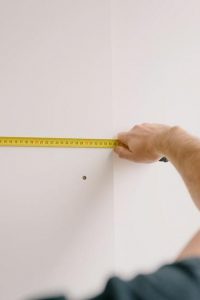One common plumbing problem that often occurs at the most incovenient of times is a clogged drain. Many home owners are tempted to reach for a bottle of their favorite drain cleaner – they are easy to use, supposed to be quick, and you don’t have to get your hands dirty. The problem with quick fixes – as with many things in life – is that the quick fix may not be the best.
Most drain cleaners these days will not damage your plumbing when properly used. The key is to make sure that you use them properly. If your home has a septic system, make sure that any cleaner specifies it is safe for use in septic systems. Different types of drain clog removers may target different types of problems and have different instructions, make sure you follow them to get the maximum effectiveness.
Sometimes a liquid cleaner will not be enough to take care of the problem. A number of years ago we received a lesson in what not to put down your food disposal – cantelope rinds. The disposal had no problem grinding them up, but a few feet down the drain they re-assembled into am impassable clog.
The first attemps was the faithful old plunger. A plunger works on the concept of hydralic pressure (simply put, you cannot compress a liquid) to move the blockage. The problem with this approach in a kitchen or bathroom sink is that the drain may not be the only outlet – there are often multiple drains and/or overflow connections which make a plunger useless in these cases
The next step was to try and remove the sink trap. Once you get to this phase, you need to make sure you have a bucket and a few towels handy. If you had previously attempted to clear the clog using a chemical drain cleaner you need to be careful here as there may still be residew in the sink, pipes, or trap. Before removing the trap, make sure to drain as much of the sink water as you can.
Place the bucket under the trap and loosen the connection to the portion of the pipe leading down from the sink to the trap. By opening the down facing segment of the pipe first you should be able to confine the draining water to the bucket – if you remove the horizontal portion first you are likely to make quite a mess as the water drains in that direction. If the remainder of the water drains from the sink, you know your clog if further down the line. If the water does not drain, then you need to check the segment between the trap and the sink for obstruction. Usually a screwdriver or length of bent clothes hanger is sufficient to check and clear any blockages found.
Next check to see if there are any obstructions in the removed trap. Either take it to another sink and see if water flows through it unobstructed or use a length of clothes hanger to probe for (and remove) any blockage. If you found something blocking the trap, you should be all set. Re-install the trap and run the water. If you found no obstruction, it is time to search further.
So the sink and the trap are clear, what next?
This is where you may need tools that you might not have handy but it is definitly a job for the correct tool. Don’t try to explore the pipe with anything that might potentially be dropped, break, or otherwise become lodged in your plumbing – the idea is to correct the problem, not cause bigger problems. The correct tool for the job at this time is usually a plumbers auger (also called a snake). This is a long, flexible, springlike contraption that is “snaked” down into the pipe. You can purchase a small, basic plumbers snake at any home superstore or plumbing supply store and they are fairly inexpensive (another example of a tool that pays for itself the first time you can use it instead of calling a plumber).
Push the auger into the pipe until you encounter a blockage. If you are using a manual auger, you may need to twist it (they usually have set screw and handle to help) to get around turns in the pipe. Once it reaches the clog, you twist it to “auger into” the blocking substance. If you have a fibrous clog, you will pull the auger back along with a portion of the clog – repeating as many times as necessary to remove it. For softer clogs (like grease) you may just force the auger through the clog and rely on water pressure later to help continue to remove the loosened clog.
If you are unsure that you have cleared the clog completely and you want to check before you re-assemble everything use a hose to run some water down the pipe. Run the water SLOWLY – you don’t want to find out the hard way that the clog is still there. Keep your bucket underneath the pipe while testing. If it is cleared, re-assemble your sink/trap and run your water for a while – make sure that your drain is working normally – if it is slow, you may still have a partial blockage.
One other potential solution is the “as seen on tv” water blaster variety of drain clearers. These gadgets are usually very inexpensive and typically consist of a small rubber nozzle with a hose fitting on one end. The concept is simple, you stick the nozzle into the drain, hook it up to a hose, and turn on the water. The water pressure first makes the nozzle swell to fill the drain or pipe opening and seal/hold it in place. Then the nozzle forces water into the pipe hopefully clearing the block by building up pressure behind it. If you listen, you will hear the clog clear and water flow rapidly down the pipes.
A couple problems to be aware of with these systems: If you have PVC drain fittings (as many sinks do), you better make sure you connections are good – if there are any minor leaks or loose fittings you are likely to end up with a sprinkler system under your sink. From personal experience there is one other problem you may run into. When you turn off the hose, the pressure that previously swelled the nozzle to hold it in place is gone – however there is still water and pressure in both the line and the nozzle. The results similiar to shaking up a soda bottle and removing the cap – it makes a great funny story to tell you friends in hindsight, but it’s not quite so funny when you are mopping up the kitchen.
Finally, if none of the above have worked, it is time to call in the professionals. As I have noted in previous articles, a good contractor is worth every penny they charge you. Most will not only help you out with your problem but will also suggest how you can prevent it in the future and if necessary point out problems that need to be addressed.
ZZZZZZ


